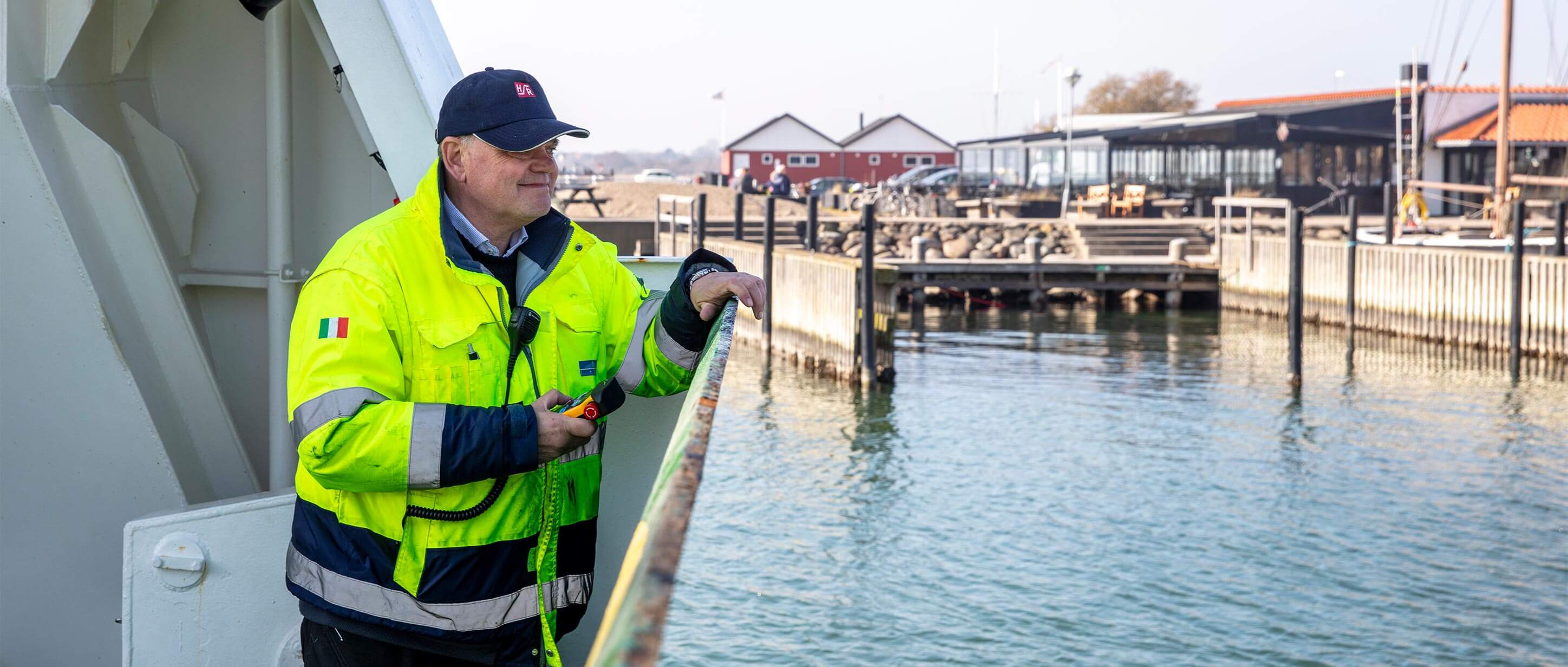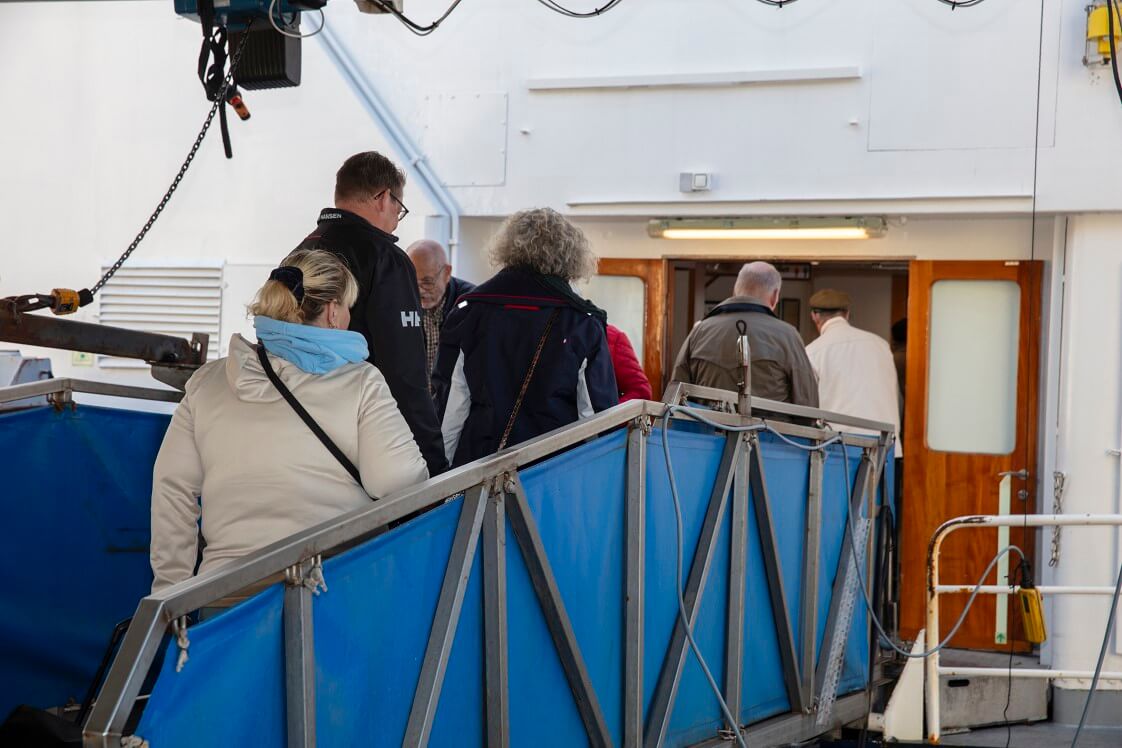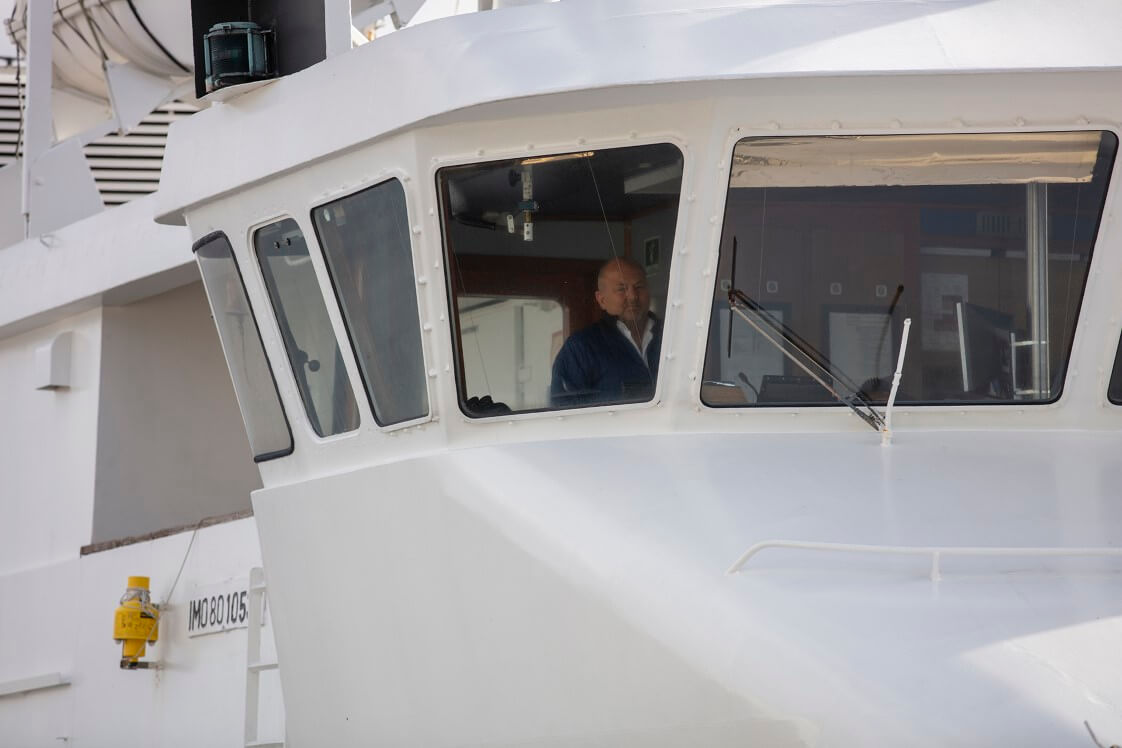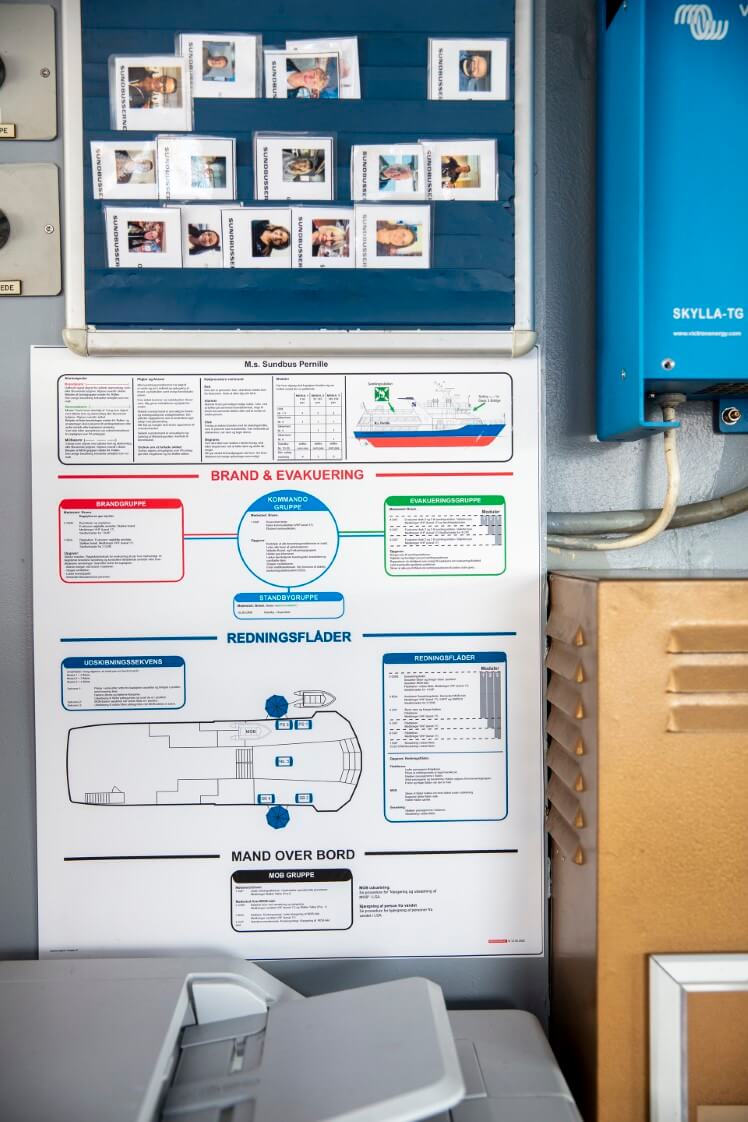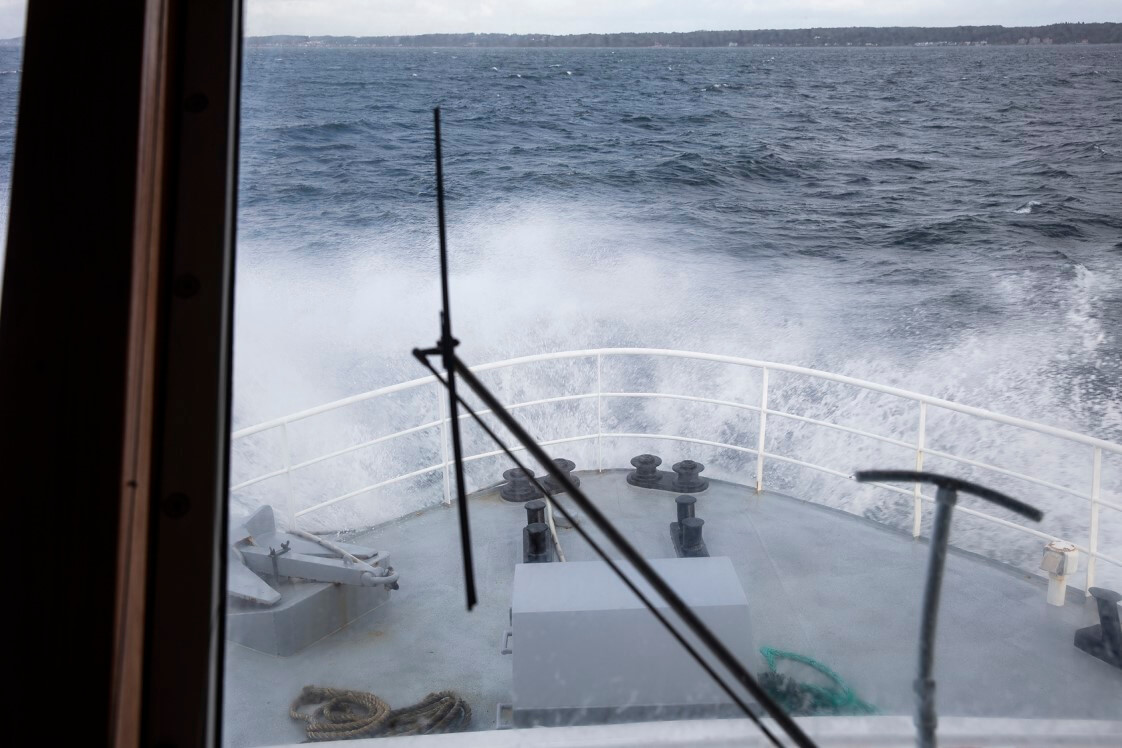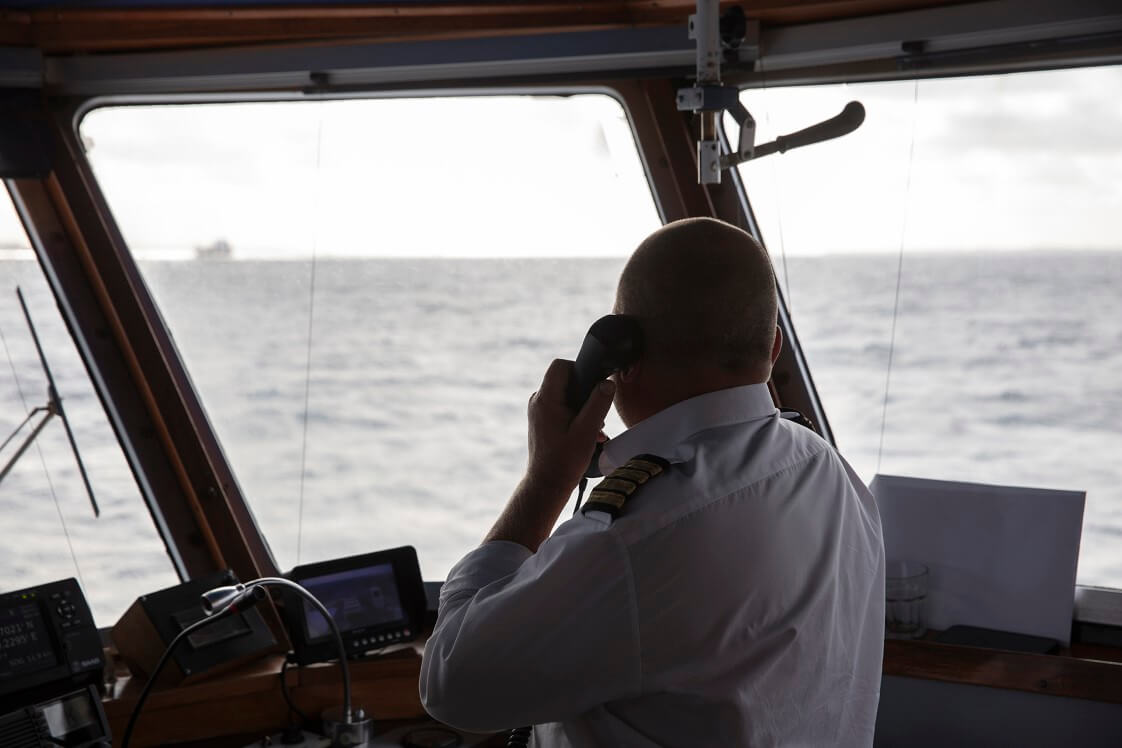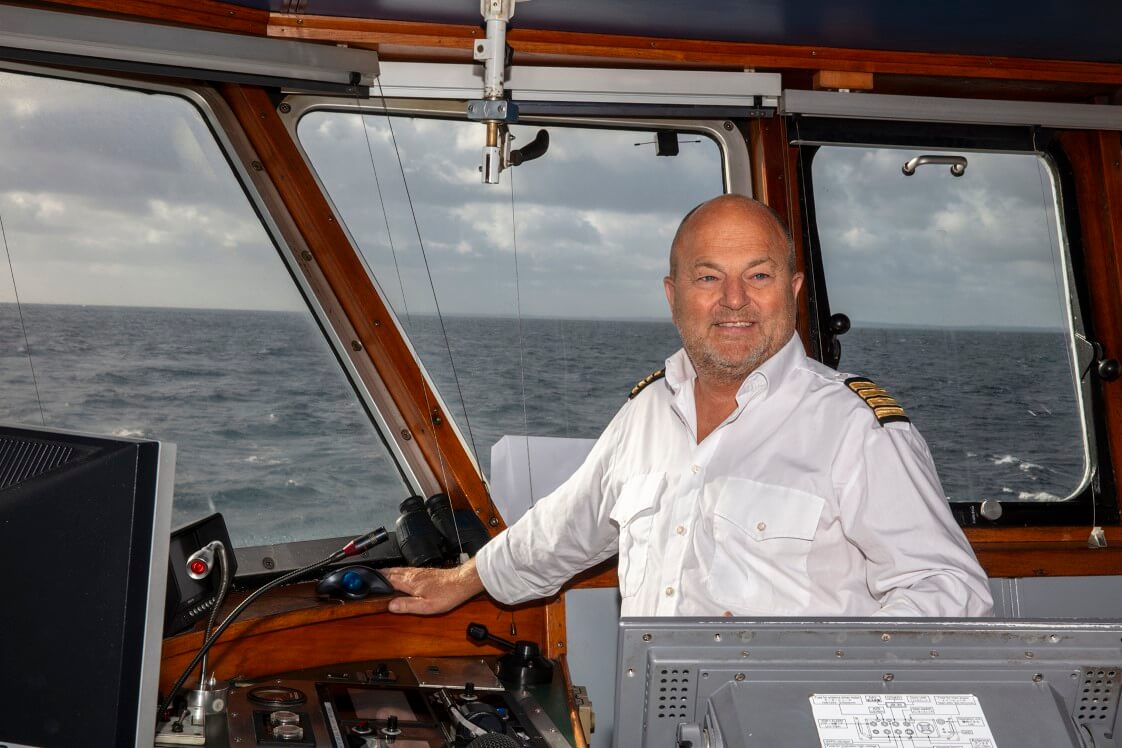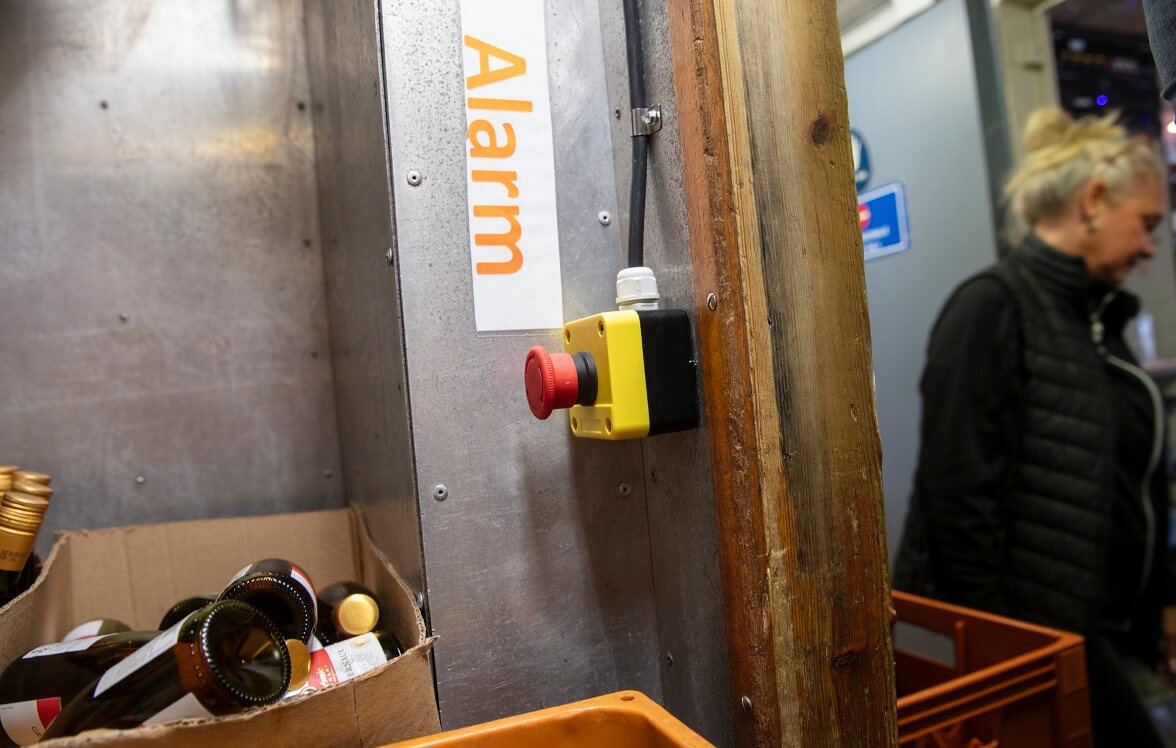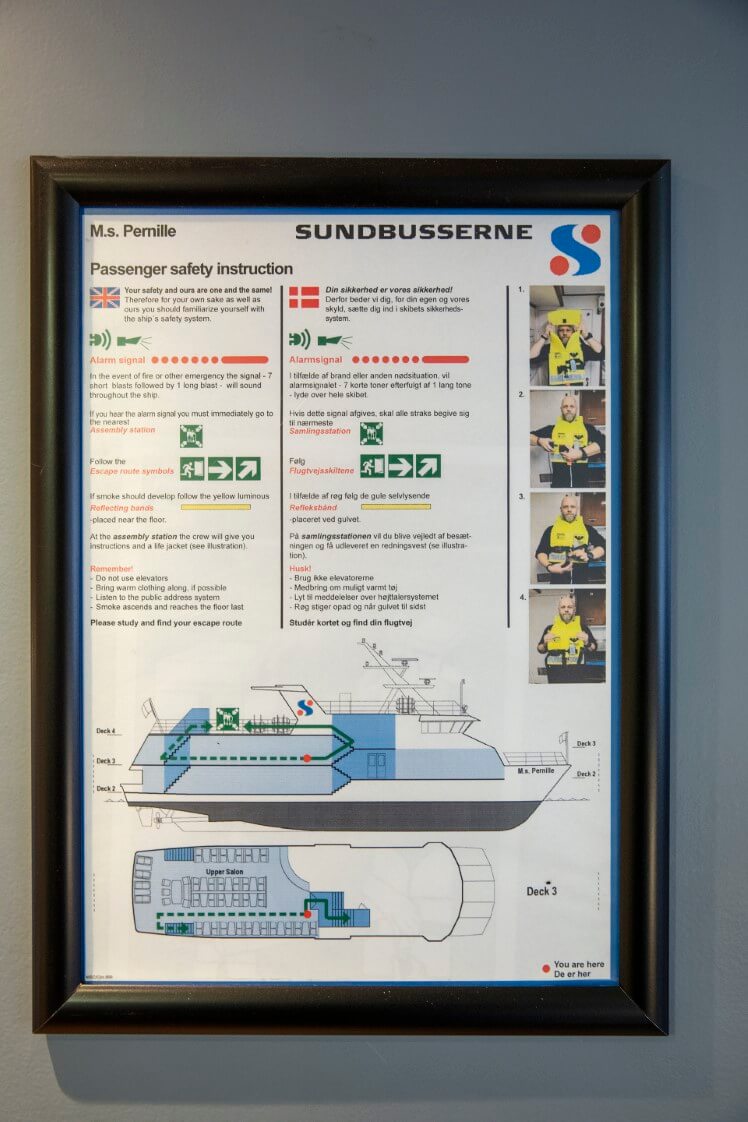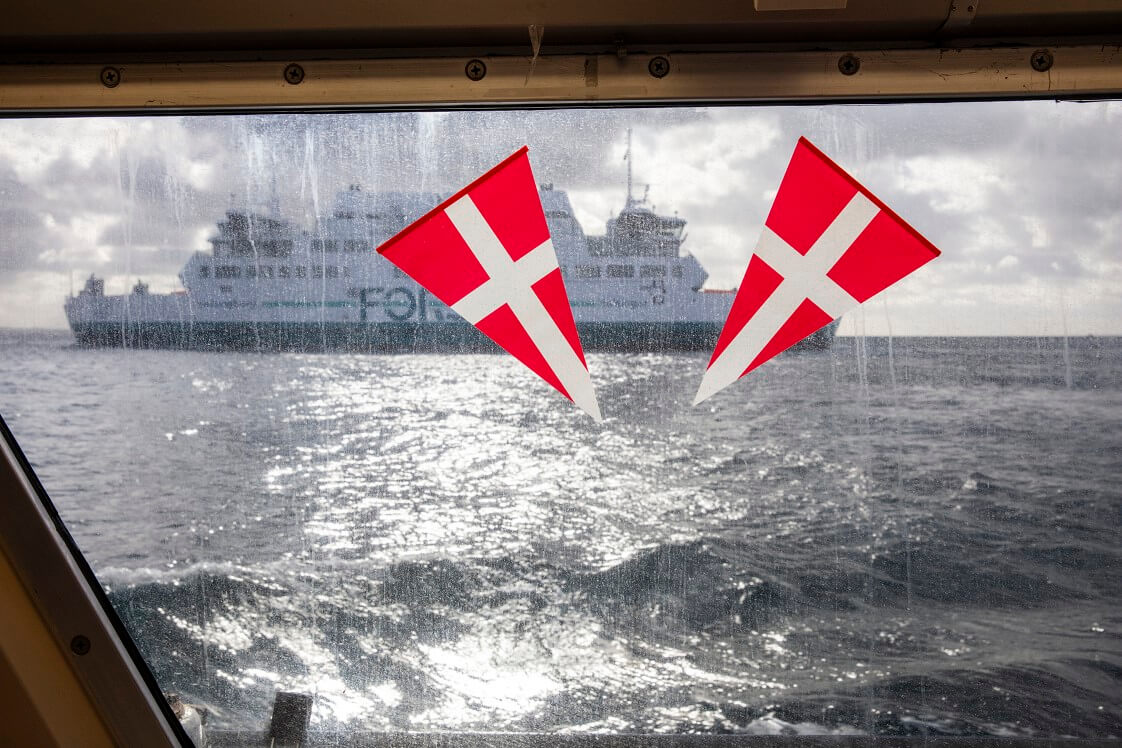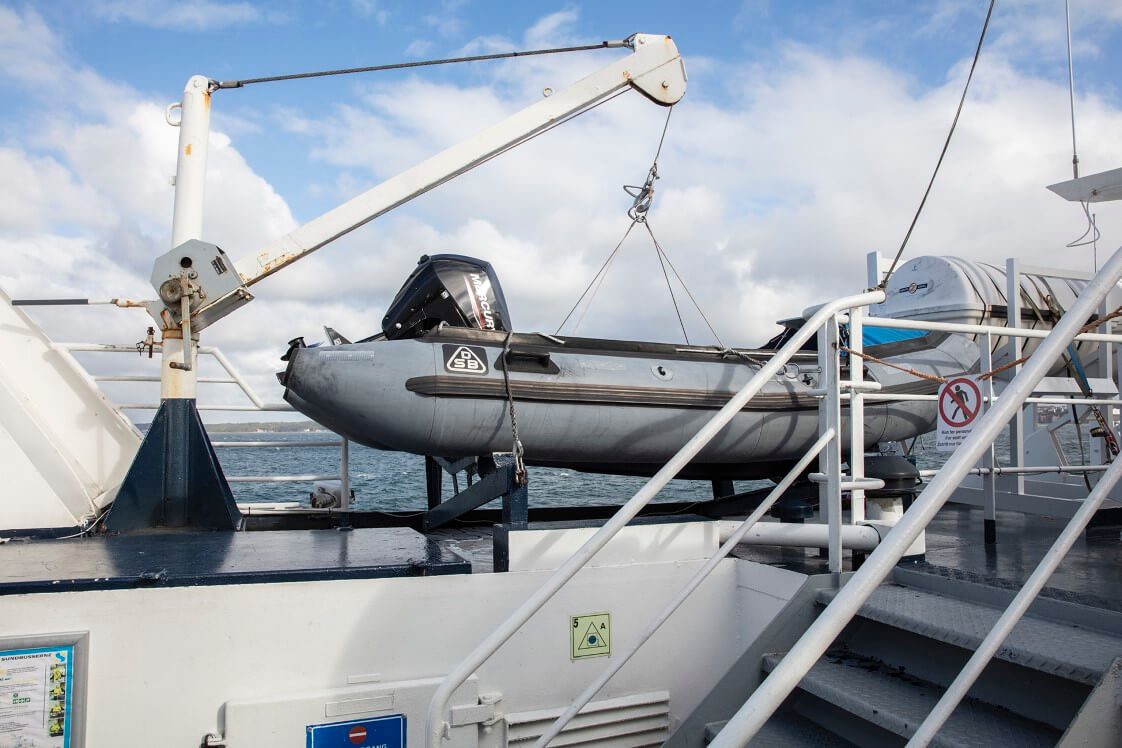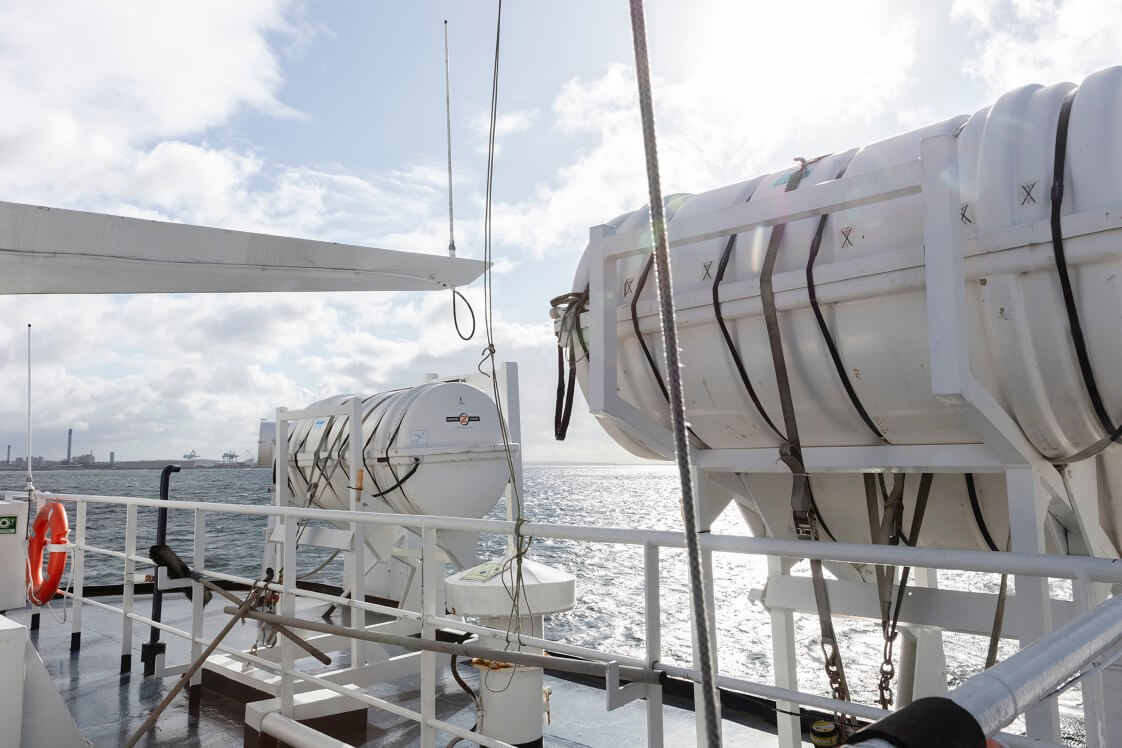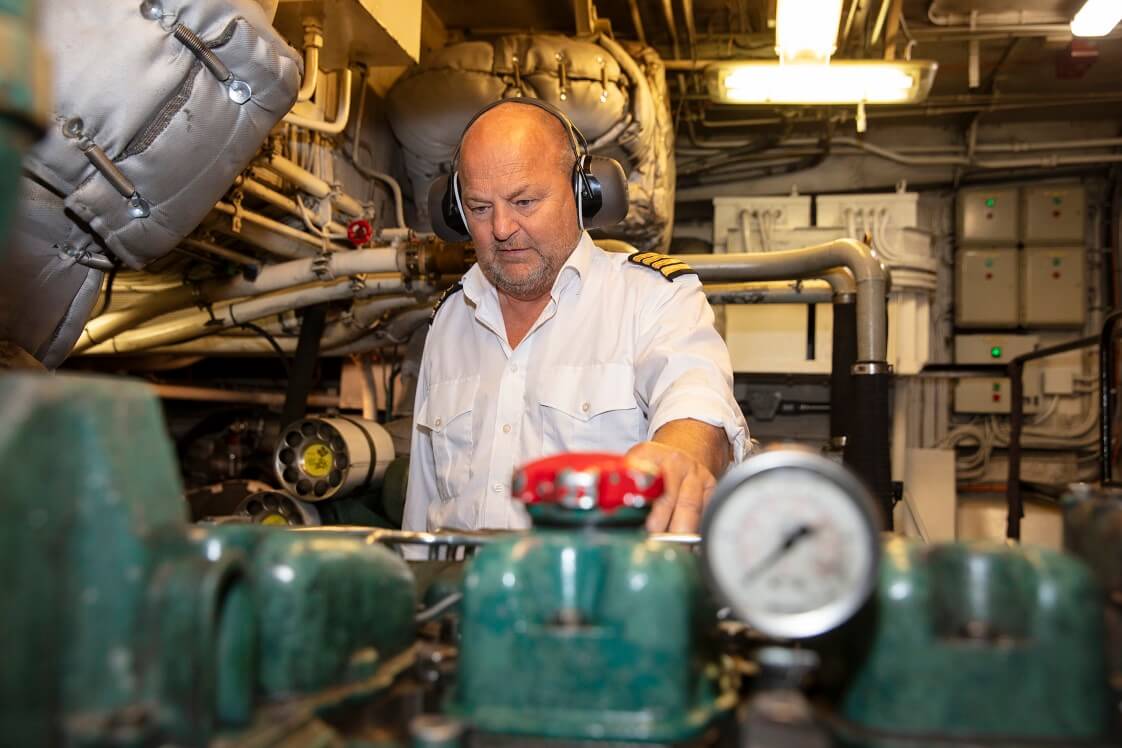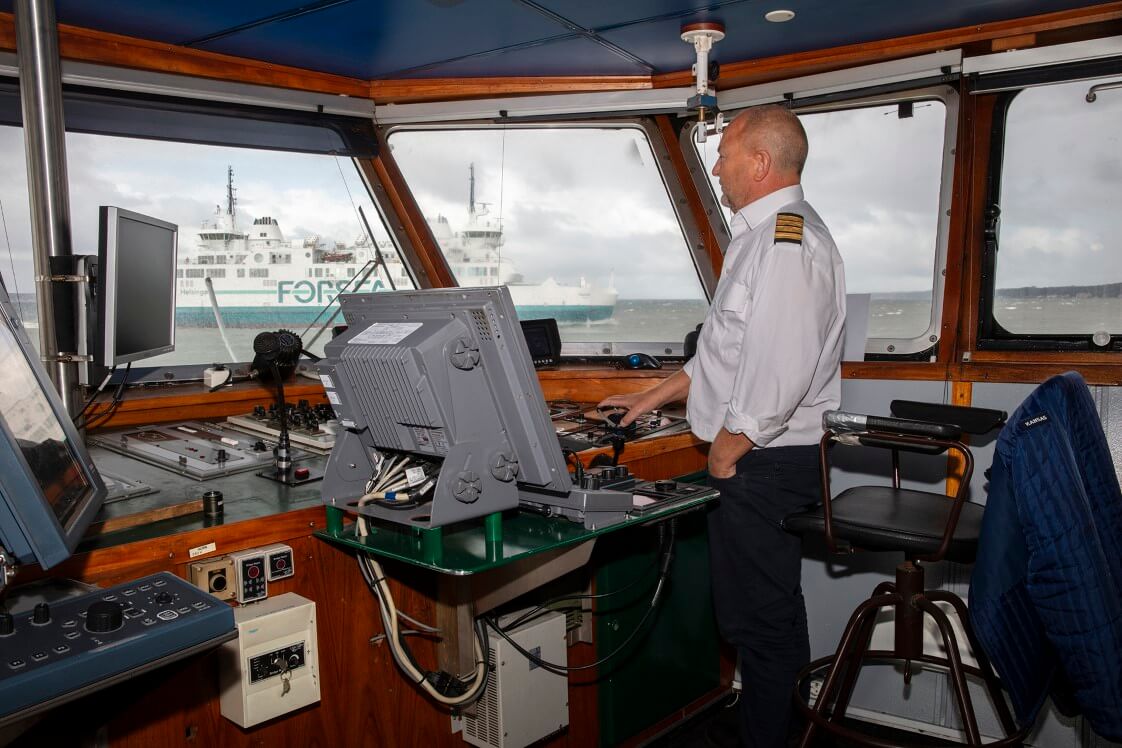At Sundbusserne, safety is something everyone takes responsibility for on the small passenger boats, where the comfort of guests is the highest priority. With clear agreements and systems in place, everyone knows their role.
»The most important thing is that we follow our procedures. It is alpha and omega. And train the new people to follow their procedures. And that we follow the schedule we have made, encompassing drills, personal safety and maintenance of the ship alike. There’s a system for all of it.«
The words belong to Nils Villadsen, Chief Captain at Sundbusserne, whom UFDS meets aboard the Pernille Sound Bus, which commutes between Helsingør and Helsingborg on the Swedish side of the Oresound, as his response to being asked to describe the best thing to do for safety on a daily basis.
UFDS is back in the waters where we have previously visited ForSea – which has since become Øresundslinjen – and heard about how the many thousands of annual departures require concentration. This time it's early October, and autumn blows up for a little dance.
As the smaller neighbor and competitor-colleague to the larger car ferries, Sundbusserne focuses exclusively on walking passengers aiming for a laid-back crossing, a bar-stop with 360 degree sea views or maybe even a floating Christmas lunch.
These weeks of the year are part of the low season, so only Pernille is in operation, while the slightly larger sister ship Jeppe is docked in Elsinore waiting for busier times, having also sailed back and forth between Copenhagen and the island of Hven during the summer months.
In addition, Sundbusserne also operates catamaran ferry Lea Elizabeth, which can take 98 passengers. Together, the three vessels carry around 350,000 passengers a year.
With 31 years in the company behind him, Nils Villadsen must be considered an experienced seafarer, both concerning the trip between Denmark and Sweden, which Pernille covers in about 20 minutes, and when it comes to on-board safety considerations.
Pernille was built in 1981 with a capacity of 194 passengers plus five to six crew members including serving staff in the three bars. The number of the latter, of course, depends on the time of year; On days like this, only the main bar on the middle deck is open.
»The weather can be too bad for us to sail. Not so much for the sake of the ship, she can easily handle it, as long as we have our nose up towards the swells, but if it gets too bumpy, we increase the risk of accidents among the passengers, and there is no reason to leave them with a bad experience,« Nils Villadsen says as we set out from Elsinore.
Dense, transverse traffic requires attention
As skipper, and also part of the management, Nils Villadsen has the highest responsibility on board and makes the decision to stay in port, for example, if the weather proves too harsh. Specifically, this means 15-16 mph mean winds, depending a lot on the wind direction.
»We have an immense responsibility towards the people we carry across, so the level of safety is very high in everyday life. This applies both to our crew and the drills we do, but also in regard to the ship being properly maintained and fighting fit, and that the safety equipment is in place,« he says.
All these elements are gathered in Sundbusserne's ISM system and the associated maintenance system, which in many ways is very similar to the setup used on the larger ferries in the area, Nils Villadsen explains.
In line with other shipping companies, Sundbusserne, which turns 65 this year, also carries out weekly and monthly drills involving equipment and routines, ensuring that all crew members are in line with their respective responsibilities in case of emergencies calling for swift action to be taken.
»We have an immense responsibility towards the people we carry across, so the level of safety is very high in everyday life.«
Nils Villadsen, Chief Captain, Sundbusserne
Fortunately, these incidents are very few and far apart, Nils Villadsen says, himself only capable of remembering two occurrences in the last three decades with people falling into the water. Both happened from the quay in the port of Elsinore, and both were quickly resolved.
Thus, on an average trip across the strait, the dense, transverse traffic is the primary center of attention, just as sailing through fog, for example, heightens awareness levels among the crew, as Safety Manager Jan Bagger have addressed on behalf of ForSea.
As we approach Helsingborg, Nils Villadsen keeps a close eye on a medium-sized oil tanker, Scot Berlin, which is heading north towards the Kattegat. With the weather in mind, he prefers to pass ahead, even though standard practice would send Pernille aft of the approaching bulk carrier.
After a quick call on the radio, Scot Berlin adjusts its course slightly to port allowing Pernille to maintain an advantageous line towards the Swedish port that doesn't involve having to dock with the waves coming straight in from the side.
»There is a lot of traffic here compared to other places, and many of the ships that travel along the Sound are here for the first time, so they can get a little stressed when they see that there are six ferries commuting back and forth. But if you just make some clear agreements, it's no problem,« he says.
Again, the safety and comfort of passengers are given top priority, which is a general strategy for Sundbusserne. This is especially true during the busy Christmas season waiting just around the corner, although it is not enough to make Nils Villadsen and his experienced colleagues break a sweat.



